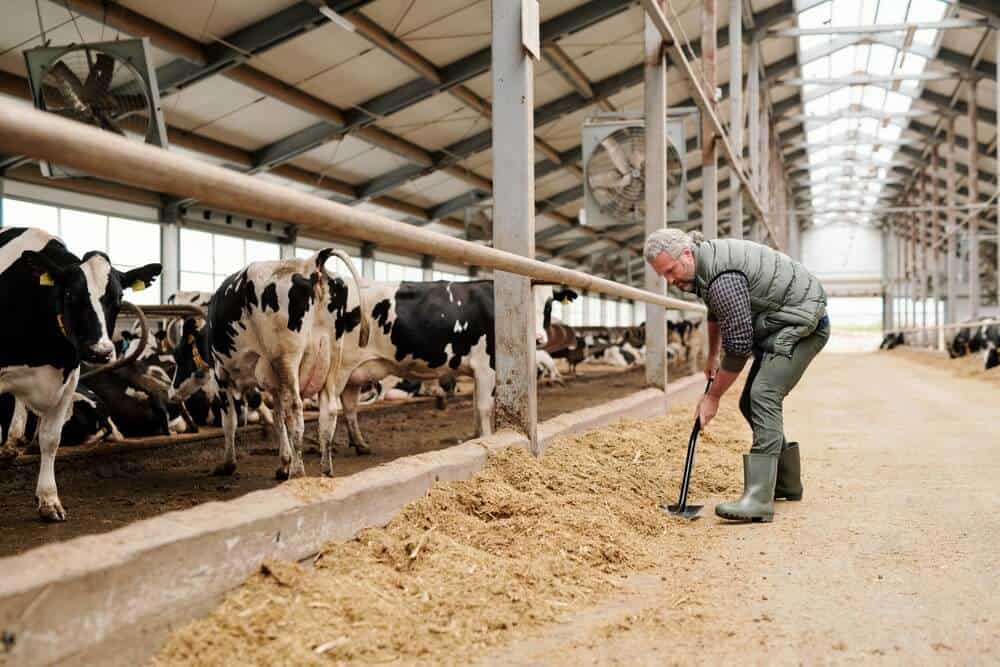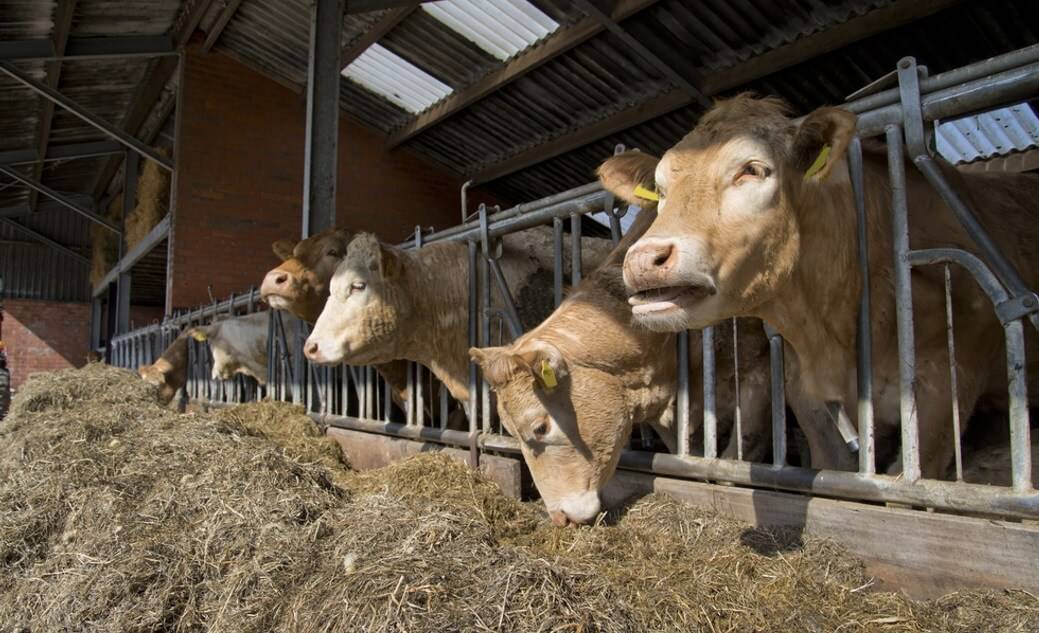Last Updated on October 2, 2024 by Alice Benny
You’ve probably wondered what a cattle shed is. It provides a separate “loafing” area for cows and helps you control the climate inside the barn. Sheds can protect cows from rain and different diseases by avoiding long periods of exposure to the elements. If you’re not sure what this valuable asset is, read on for some tips on building one.
What is a cattle shed used for?
A cattle shed isn’t just about protection. Let’s look at the various uses of a well-built cattle shed.
Provides cows with a separate “loafing” area
A cattle shed is an integral part of cattle housing. A loafing area allows cows to regulate their body temperature and can be part of your cattle’s daily routine. It should include non-feed passageways as well as a separate floor to prevent muddy footing.
Cows love separate pens, and a cattle shed provides them with a particular loafing area. Cows in pens are also happier and healthier, which means more milk is produced.
Inexpensive
Cattle sheds are relatively cheap to build, and they’re easier to convert to other farming methods. Compared to stanchion barns, loafing barns don’t require a lot of equipment. A loafing shed can be constructed using inexpensive lumber and even repurposed buildings.
Helps to control the climate in the barn
A well-designed cattle shed is essential for optimal performance. Heat stress is directly related to yield losses, so a suitable climate in a cattle shed is necessary to maximize yields.
A cattle shed should follow the temperature outside and act as a sunshade in hot weather. The roof slope should be low enough for warm moist air to pass over it.
The sidewall openings should be tall enough to keep warm air under the roof away from the cows. A cold barn should not have too much insulation, which will increase the radiant heat load and contribute to summer heat stress.
Reduces the risk of udder disease
Environmental factors can increase the risk of udder disease, and a more controlled environment inside a cowshed can help prevent it. The milking process should be gentle, with a milker claw to massage the milk quarters.
The udder needs ample bedding to prevent injury and limit contact with manure and cold floors.
Mastitis is caused by a variety of contagious and environmental microorganisms. Once bacteria invade the udder, the immune system attacks them and increases SCC levels. Once the infection clears, SCC levels gradually return to normal. However, chronic illnesses may take weeks or even months to clear.
When raising Brown Swiss cattle and other heavy milkers or even a mini dairy cow, having sanitary conditions is essential.

How to build a cattle shed
There are several elements to consider when planning your livestock shelter. A dual-sloping roof is essential for natural ventilation and protection from severe weather.
Open side walls also provide fresh air in a confined space. On the other hand, a concrete wall foundation will ensure a sturdy building structure. Finally, quality doors will give your cattle shed a barn-like image.
Here are some tips for designing your cattle shed. Follow the guidelines provided, and your cattle shed will be safe and secure.
Ventilation
If you correctly design your cowshed, it is important to consider ventilation to ensure your animal’s comfort and health. They will need swift air throughout the areas of the rest of the barn in the summer months and a light wind in winter.
In addition, you’ll need fresh air to remove polluted, warm, or humid air from your barn.
Insufficient ventilation can result in heat stress during summer and respiratory illnesses during winter. Therefore, make sure that your ventilation functions equally well during all seasons and can function in both low and high-ventilation conditions in-between seasons.
Insulation
The dairy shed needs to be well-insulated if you plan to construct your housing structure in more cold climates. Insulation stops water loss and heat loss because of condensation.
Insulation on your roof keeps an interior temperature of 1 to 2 degrees above the outdoor temperature in cooler conditions. The insulation will shield your cows from cold and reduce the heat radiating from the sun during hot weather.
Freestall partitions
Farmers must be aware of the extra space that a cow requires to stand. Cows need to move freely in their cattle sheds, and stall partitions should be spaced so that the cow can walk, lie down, and shift weight without being restricted by the divisions. Regardless of size, stall partitions need to be safe and not interfere with the cow’s movement.
Flooring
The floors in your cattle shed are vital to maintaining their hygiene, preventing hoof issues that result from rot, and preventing your cows from falling. They should be reinforced with cement or covered with cement pavers. Concrete floors must be smooth and have grooves to increase the grip.
Roofing
A well-constructed roof is crucial to protect your cows from the hot sun, cold snow, and rain. The roof should withstand the burden of snow, withstand powerful winds, and prevent leaks. Furthermore, it must also be fireproof to protect your animals.
Access to the Feeding
Each stall you have should offer your cows the ability to access food and water. The manager’s surface must have a minimum of 36 inches in width and be smooth to promote feeding.
Tiles made of ceramic or strong cement are great options for silages. Your cows should also have access to an uninterrupted supply of clean drinking water to ensure their health.
Where to buy a cattle shed?
Whether you’re a newbie or an experienced farmer, the proper facilities are essential to making your operation productive. In addition to good hay, you need space to feed your cattle and move around. Therefore, it is crucial to choose a design that best suits your needs.
Depending on your property, you may select a design built on a small parcel of land. You can also buy stalls online. However, before you nail down a manufacturer, consult various online sellers and compare reviews, contact the seller and ask about the structure.
Cattle Shed Designs
Proper preparation will prevent bad performance and is especially relevant to those planning to build their own livestock shed. Whichever types of cattle you are raising — whether it is miniature cattle breeds or full-sized cattle such as Limousin cattle — knowing the specific requirements for housing your cattle will avoid costly errors or reconstruction. We hope our suggestions to construct your own cowshed will assist you in getting it right the first time.
Learn more about taking care of cattle and about raising Scottish Highland cattle. Learn what is feeder cattle.

